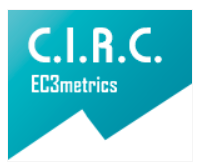Language, praxical and visuospatial activity from aphasic patients diagnosed by the boston test in Sucre
Lenguaje, actividad práxica y visoespacial de afasicos evaluados con boston en Sucre
Main Article Content
Introduction: The evaluation of aphasic patients omits the qualitative dimension of linguistic and visual-motor analysis, this being relevant for diagnostic
orientation. Objective: To determine the visual motor and language skills of the patient with aphasia, using the Boston test for the Diagnosis of aphasia. (BDAE). Methods: A sample of 24 aphasic patients of both genders, of the department of Sucre is selected, using the assessment instrument in its entirety to measure sociodemographic variables and analysis as skills listening, speaking, reading, writing, visual motor, psycholinguistic structure of comprehension and expression, lesion location and types of aphasia. Results: It was observed that the age range of patients was placed between 38 - 70 years, mainly boys (70.8%), placed in a low socioeconomic status (87.5%),with a range of basic education (66.7%). Lesions were anteroposterior predominance (41.7%) coinciding with aphasia types found, the most frequent global aphasia (45.8%) followed by mixed (20.8%); largely caused by stroke (58.3%). In all patients a restricted vocabulary found with altered language skills entirely in the comprehensive and mixed aphasia; in transcortical aphasia and Broca single oral skills are altered. Gnosis and Praxias were compromised in patients depending on the site and extent of injury. Conclusion: All patients with aphasia have difficulties with language and visual motor skills, being necessary to include them in your application.
Downloads
Publication Facts
Reviewer profiles N/A
Author statements
Indexed in
- Academic society
- Bogotá: Corporación Universitaria Iberoamericana
- Publisher
- Bogotá: Corporación Universitaria Iberoamericana
Article Details
Arboleda, A., Pineda, D., Lopera, F., Villa, L y Sánchez,P (2001). Aplicación de la Prueba de Boston– versión Colombiana- en pacientes Afásicos por enfermedad cerebro vascular. Revista Neuropsicológica,3 197- 209.
Arboleda, A., Pineda, D., Lopera, F., Villa, L; Sánchez,P (2001). Aplicación de la Prueba de Boston – versión Colombiana- en pacientes Afásicos por enfermedad cerebro vascular. Tesis de Maestría en Neuropsicología. Universidad San Buena ventura, Medellín.
Basso A., Della Sala S. & Farabola M. (1987). Aphasia arising from purely deep lesions. Cortex.23,29-44
Brust, J., Shafer, S., Richter, R., y Brun, B. (1976).
Aphasia in acute store. Stroke, 7, 167 – 174.
De Renzi E., Faglioni P. y Ferrari P. (1980). The influence of sex and age on the incidence and type of aphasia. Cortex. 16, 627.630.
Echeandía , A., Perea, B. y Olmedilla, N., (2006).Afasia global por afectación subcortical predominante.Recuperado el 16 de mayo de 2006,http://Cechevarriaa@medynet.com
Eslinger PJ. & Damasio AR. (1981). Age and type of aphasia in patients with stroke. Journal of Neurology,Neurosurgery and Psychiatry. 44, 377-381.
Fernández, M.; Ruiz, J.M.; López, J.A.; Llanero,M.; Montenegro, M. y Montejo, P. (2012). Nueva versión reducida del test de denominación de Boston para mayores de 65 años. Rev. Neurol:55;399-407
Gervasio, G. (2001). Los cuatro pilares del trabajo autónomo. Ponencia en el V congreso de las Americas. Quito - Julio
Geschwinnd, N., Quadfasel, F., y Segarra. (1968).IsolatioThe assessment of aphasia and related disorders. Philadelphia: Lea and Febiger.
Goodglass, H. y Kaplan, E. (1974). The assessment of aphasia and related disorders. Philadelphia: Lea and Febiger.
Goodglass, H. y Kaplan, E. (1983). Boston NamingTest. Philadelphia: Leal & Febiger.
Goodglass, H. & Kaplan, E. (1986). La evaluación de la afasia y de trastornos relacionados. México:Editorial Médica Panamericana. S.A
Goodglass, H. & Kaplan, E. ( 2005). Evaluación de la afasia y de trastornos relacionados.
Goodglass, H., & Kaplan, E. (1.972). The assessment of aphasia and related disorders. Philadelphia:Lea and Febiger.
Granados, J. et. al. (2002). Lesiones corticales y subcorticales en 31 pacientes con syndromes afasicos:Boletin medico de postgrado. Vol.XVIII Nº1 enero – marzo 2002.
Kertesz, A. (1981). Western Aphasia Battery. NewYork: Grune and Stratton.
Kuryzke, L. (1985) Epidemiology of cerebral vascular disease. In McDowell y Caplan. Cerebral vascular survey report the National Institute of Neurological and Communicative Disorders and Stroke.(Revised 1985). Whiting Press, Rochester MN.
Lecours, A., Peña-Casanova. J.,Dieguez-Vide, F. y Ardila, A. ( 1.995). Paralexias y paragrafias. En :A.R. Leucours, J. Peña-Casanova & F. DieguezVide,Dislexias y disgrafías: Teoría, formas clínicas y exploración. Barcelona: Masson.
Lopera, F., y Ardila, A. (1.985).Prosopamnesia andvisuolimbic disconnection syndrome. Neuropsychology, 6, 3-12
Luria, A.R. (1977). Las funciones corticales superiores del hombre.
Mihailescu, Weigl, E. y Kreindler A. (1992) Beitrage zur auffassung gewisser aphasische storungen als blockierungserscheinungen. Archiv für Psychiatrie und Zeitschrift für die gesamte Neurologie 200 306-323
Montañez, P. (1987). Los síndromes afásicos. En: el lenguaje Fundamentos de Neurolinguística (Bustamante, Lopera & Rojas) Medellín. Editorial Prensa creativa.
Pedersen, P. et. al. (1995). Aphasia in acute stroke:incidence, determinants and recovery. Annals of Neurology. 38: 659-666.
Rado, J. (2006). Adaptación del test de Boston a la población Afásica que acude al IRN. Tesis de maestría. Centro Peruano de audición y lenguaje, Lima.
Rosso, C; Vargas, P; Valabréque, R; Arbizu, C; Leger,A; Lehéricy, S; Samson, Y. (2014) Severidad de la afasia en pacientes con accidente cerebrovascular crónico.Neurorehabil Neural Repair.
Scarpa M., Colombo A., Sorgato P. y De Renzi E.(1987). The incidence of aphasia and global aphasia in left brain- damaged patients. Cortex.23, 331-336.
Szelies B., Herholz K. y Heiss WD. (1991). Impairment of lenguaje is related to left parieto-temporalglucose metabolism in aphasic stroke patients. J Neurol 231 19-21.












